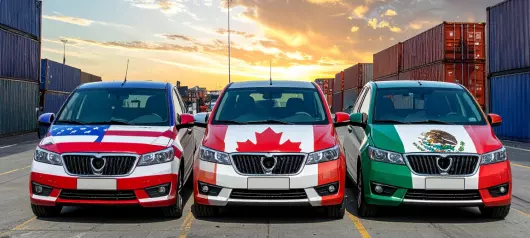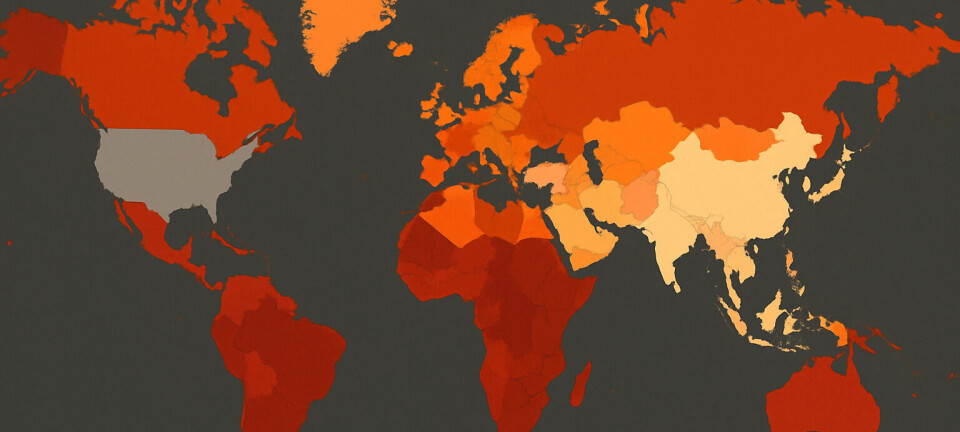Interactive tariff map
Interactive map: New US automotive tariffs & global trade rates (China, EU, Mexico)
Recent trade deals have been changing tariff rates for various countries, seeing some drop from previously threatened higher tariffs, while others have increased. Each rate holds consequences for the automotive industry, potentially shifting supply chains and flows as OEMs, suppliers and logistics providers alike attempt to ascertain the most optimal, efficient and cost-effective transport routes and markets.
With geopolitical pressures and shifting trade policy under renewed scrutiny, logistics professionals and OEMs must anticipate how tariff changes affect sourcing, lead times and cost structures.
Infographic on changes to US tariffs on China
China has seen some of the biggest swings in terms of tariff rates, going as high as 145%. Since Trump entered office in January, there has been trade contention between the two countries, with China retaliating to automotive tariffs from the beginning with a 10% duty on US vehicles. The country filed a complaint with the World Trade Organization and things further escalated.
By April, the US had upped tariff threats on China to 50%, with China coming back with a 34% tariff on US imports. These then were hiked up further - the US raised rates to 104%, then 145%, leading China to halt the export of critical rare earth minerals globally.
Trade relations between the two once again settled down, with a "done deal" apparently settled in a trade agreement framework. As it stands, the US will enforce 55% tariffs on China and 10% for the US. It is understood that the 55% tariffs on China consist of a 10% ‘reciprocal’ base tariff, 20% International Emergency Economic Powers Act or IEEPA tariff, and an existing 25% tariff on imports from China. China has also offered expedited export approvals for civilian uses of rare earth minerals.
As of 30 October, following a meeting between the US and Chinese presidents, the two countries have come to a truce. The US has agreed to reduce tariffs on China, and in exchange China agrees to continue rare earth exports from the country.
Want more tariff-related articles? See the most recent stories on trade and tariffs below:
-

Inbound logistics at the crossroad of cost, resilience and digital change, says DP World’s David D’Annunzio
-

The story of 2025 livestream: Nearshoring a key trend amid tariff uncertainty and trade volatility
-

JLR revenue drops 25% amid £196m cyber attack costs
-

Hyundai to invest over $85bn in advanced manufacturing in South Korea by 2030
-

Automotive supply chain Q4 2025 outlook: Cost pressures, tariff uncertainty and disruption
-

Trump and Xi agree on US-China tariff reduction and rare earths supply
-

American Axle & Manufacturing gets tax break for $133m investment in Michigan site
-

Tariffs and tensions: Trends in North American automotive logistics
-

Watch: VW's Anu Goel on strategies for dealing with uncertainty and the impact of tariffs on parts and service
-

Carmakers spread the cost of tariffs but prices set to rise say analysts








